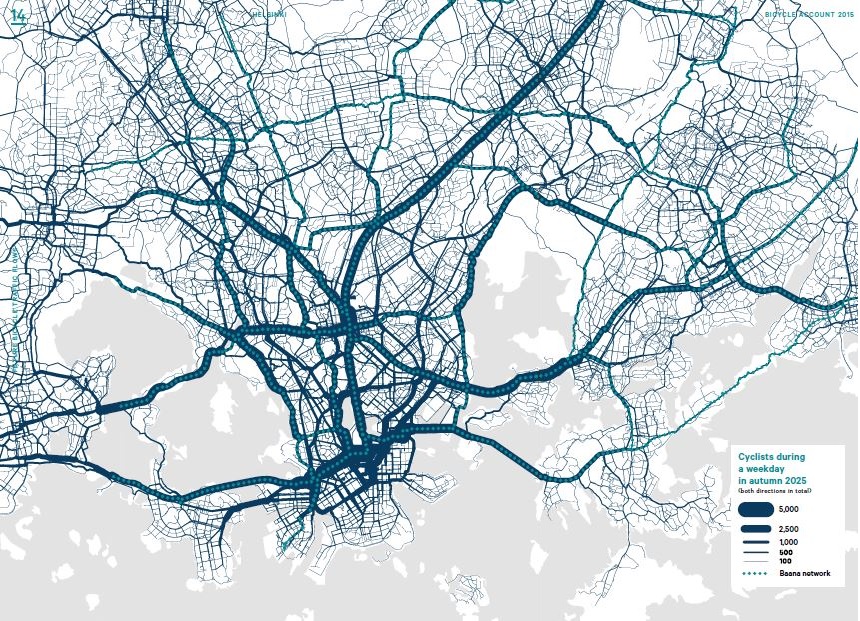
Helsinki, cyclists' capital in the North
The city of Helsinki recently released the Helsinki Bicycle Account 2015, a precious document assessing the evolution of cycling in the Finnish capital. The data reported depict a healthy and lively city, where cycling is on the rise as well as dedicated funds and infrastructures.
Cycling as a necessity for future mobility
In a city getting denser and denser like Helsinki, where the number of residents grows by 10,000 every year, mobility is a strategic issue. Helsinki is a member of the Cities for Cyclists network, and as such it is aware of the great benefits cycling infrastructure can grant. Therefore, not only the municipality is investing time and money (up to €5-7 million per year) to develop its cycling objectives, residents are also strongly supporting it. Apparently, 91% of non-bicyclist residents have a positive attitude towards the promotion of cycling – rising to 96% if all citizens are considered, regardless of their commuting habits.
Cycling also appears to be way more convenient when compared to driving. The studies mentioned in the Account show that €1 invested into the cycle paths of Helsinki will generate nearly €8 worth of benefits. These are several times higher than those derived from other typical forms of transport. The comparison with investments in cars is striking: generally, cars cost to society instead of benefitting it[1].
On the good path
The city has already begun investing in cycling: in 2012, the first Baana connection, a high quality primary cycle path, was opened as a first step of a project aiming to build a whole Baana network covering the whole city, for a total of 130 km. This effort also goes along with what the population said were the top 3 factors that would increase cycling in the city:
- A more extensive and cohesive cycling network
- Safer cycling
- Improving the conditions of cycle lanes
The 37% of cyclists also said they cycle because it’s the easiest way to get around in the city, making once again infrastructure extremely important. Today, 45% of all the trips made by bicycle are to get to work or to school: cycling is considered a means of transport, not (only) a leisure activity.
Finally, the administration already proposed a huge increase in funding up to €20 million per year. This will produce approximately €774 million in benefits by 2054, hopefully pushing cycling modal share to 15% by 2020. Helsinki is already in a great position with an 11% modal share, second only to Copenhagen.
[1] As reported in the Helsinki Bicycle Account 2015, “Denmark has calculated that benefits generated by cycling are worth 1.22 Danish kroner per kilometer, whereas driving a car costs society 0.69 kroner per kilometer”.
Network/Project Involved:
Contact the author
Recent news!
Upcoming events
Contact Us
Avenue des Arts, 7-8
Postal address: Rue de la Charité, 22
1210 Brussels, Belgium









